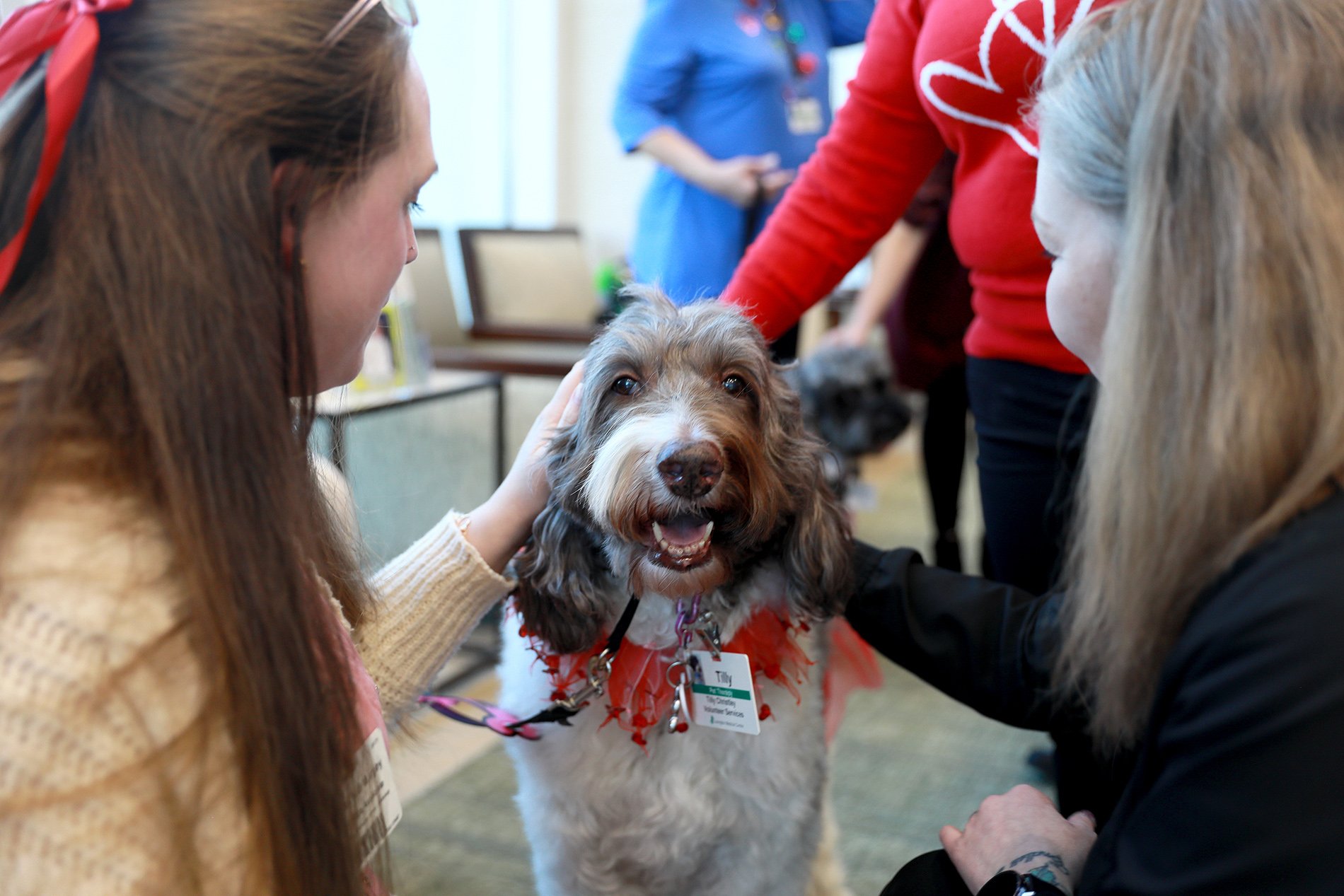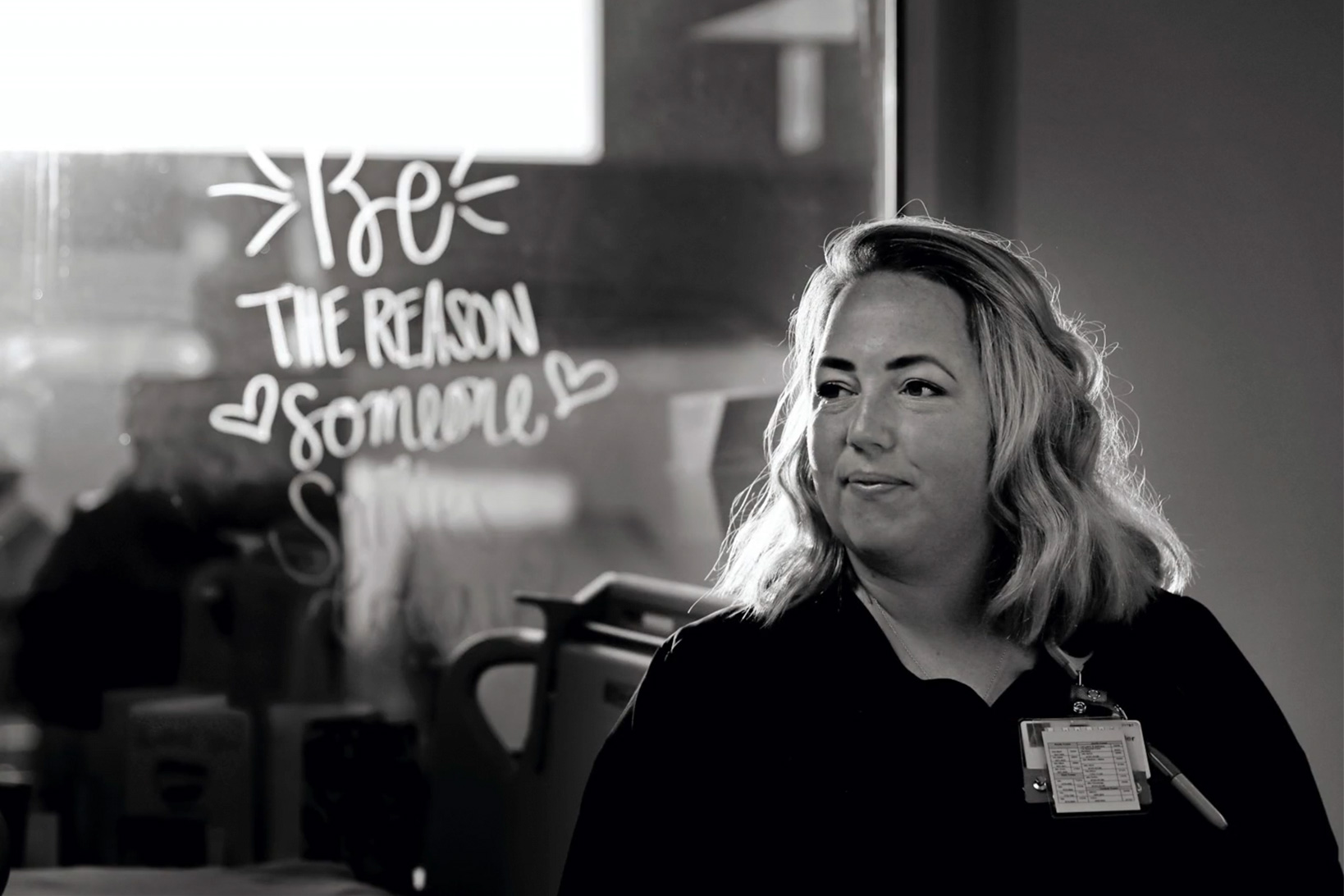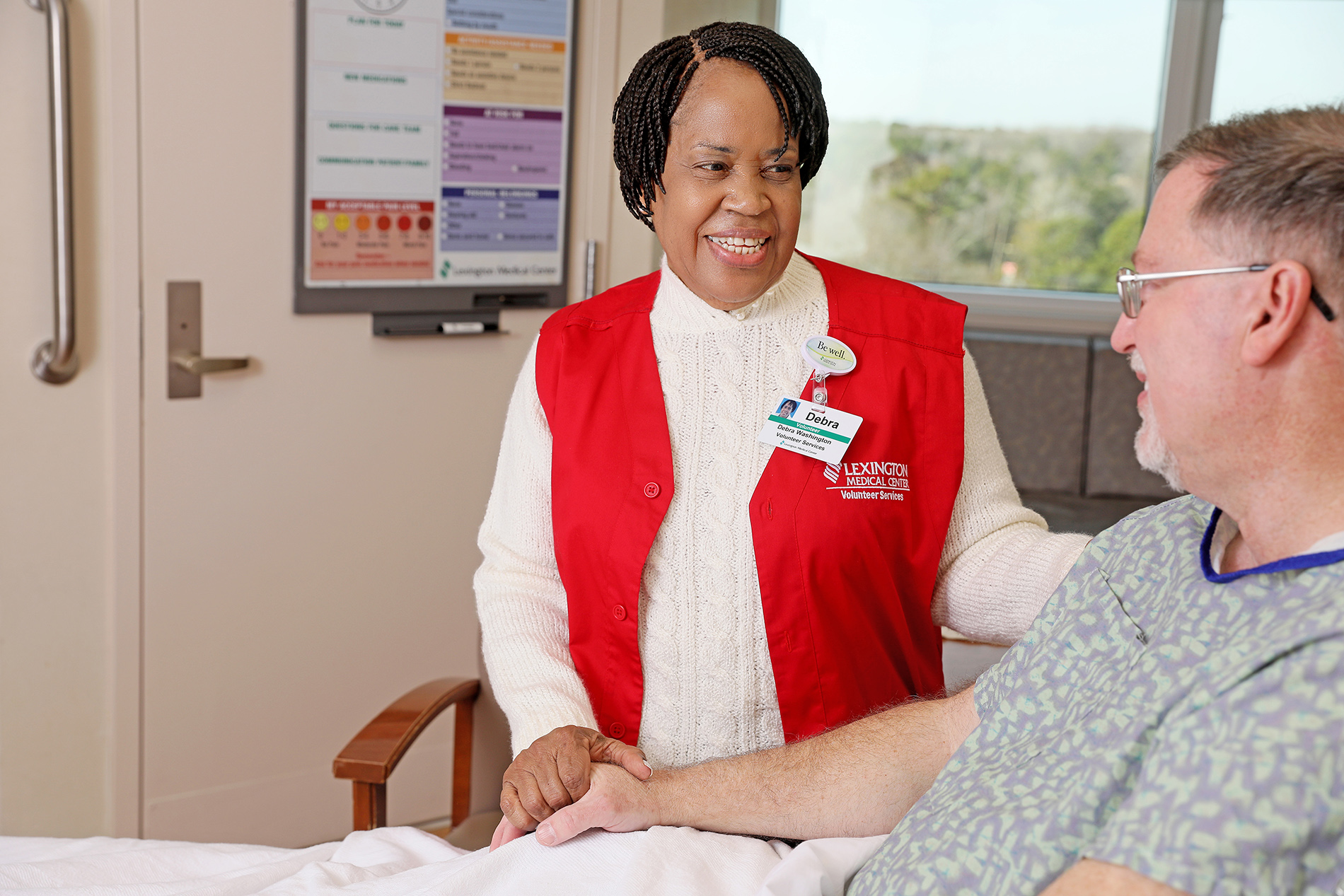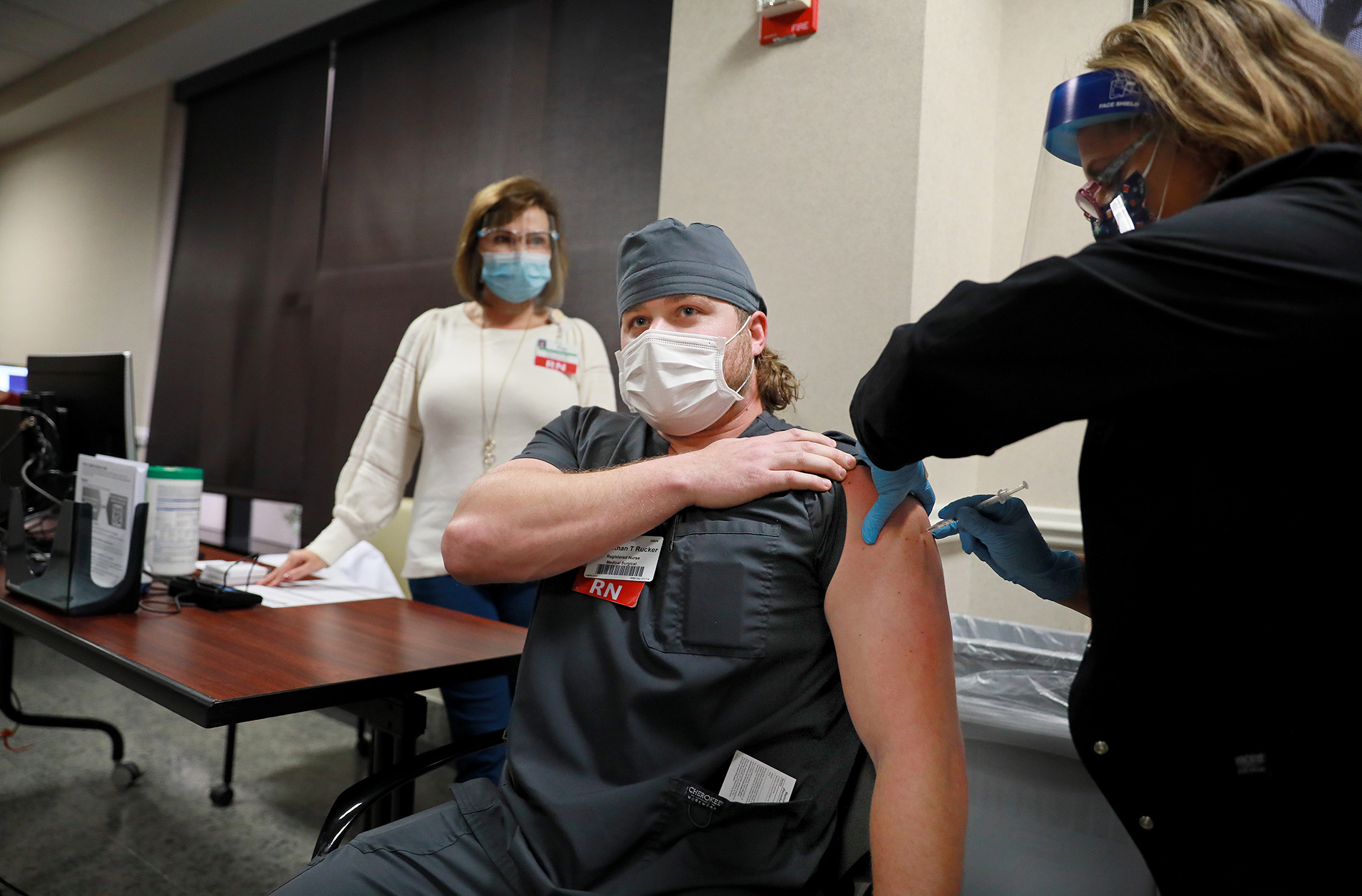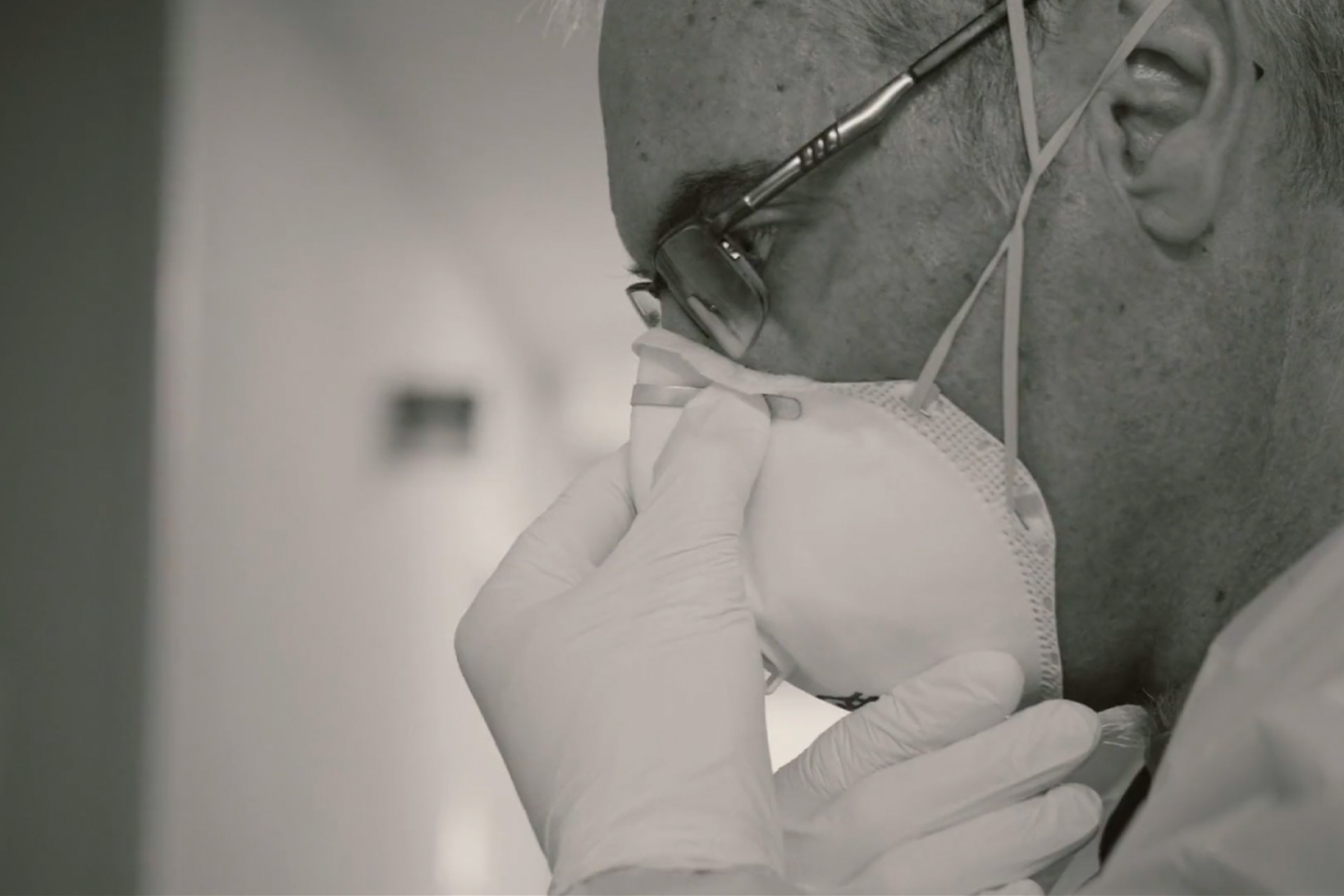Sharyl Groscost has her own set of hospital rounds to make when she arrives at Lexington Medical Center on Wednesdays. But it’s not a rigid schedule. It can’t be.
The need is too great. Too unpredictable.
Sharyl and McKenzie’s (her six-year-old Westie) first stop is to check in at the Volunteer Services Office, but they rarely make it out of the parking garage before the work begins. Smiles, petting, cuddling, happiness – it’s all part of the job, and Sharyl says it’s the best in the world.
The Lexington resident got involved in pet therapy more than 25 years ago working with disabled children in Atlanta. A move to Alabama expanded her services to nursing homes and veteran facilities, but their return to South Carolina in 2012 has resulted in a close partnership with Lexington Medical Center.
The center’s Pet Therapy Program began in 2008 when an ICU doctor – who had her own pet therapy dog – suggested it to hospital administrators. The first pet-handler team was a retired police officer who had two dogs: a Rottweiler and a Shih Tzu he dressed up as a nurse.
Today the number of pet therapy teams is 12 and counting. Each dog goes through a national certification process and most make weekly visits to the facility. The program even makes trading cards with a photo of each pet on the front and fun facts like their date of birth and favorite toy on the back.
“We could never have too many pet therapy teams,” says Volunteer Services Coordinator Georgia Edmundson, who helps manage 250 active volunteers logging nearly 35,000 hours annually. It’s all part of Lexington Medical Center’s efforts to provide the best experience possible for patients and their families.
Other volunteer opportunities include meeting/greeting and wayfinding (helping patients get from one place to another). They also help clinical staff on the floor, so that they can remain focused on providing patient care. Finally, volunteers also help with the hospital discharge process, bringing their involvement full circle. During the training process, the volunteer services team ensures that each volunteer understands how important their role is – from the first impression to the last – in providing optimum care.
The stars of the show are the pups. The benefits of pet therapy – particularly on health and wellness – are well documented. These include lowered blood pressure, improved cardiovascular health, a calming effect through released endorphins, enhanced communication, and decreased feelings of depression, anxiety, boredom, and isolation.
The physical and psychological benefits are even more important for cancer patients, especially for those whose family members are not able to attend treatments with them. Pet therapy has been shown to reduce depression for individuals receiving chemotherapy – making it a priority for Lexington Medical Center.
When Sharyl and McKenzie finally make it into the building, there are more unplanned stops, more smiles, more laughter as they make their way from the volunteer office to the oncology floor in the North Tower. Over the years – first with a Westie named Mr. Piper and now with McKenzie – Sharyl has become a mainstay in this department.
The handler and her pups have gotten to know patients and their families, who often attend weekly treatments for months at a time and build close relationships – celebrating wins and even lives lost. Sharyl remembers when Mr. Piper was invited to a celebration of life service for a patient they had gotten to know well, calling it both joyful and sad. “There’s truly a bond there,” she says.
Although the program is always open to special requests (and there are many), other regular stops include waiting rooms, like those on the surgery floor where worried family members could use distraction and comfort, and the rehabilitation floor. Sharyl particularly sees the benefit for children, who often have long waits during treatment.
She recalls one young child – a boy of two or three with scars on his face – who attended his grandfather’s rehabilitation sessions along with his mother. When he ran over to play with McKenzie, his mother looked concerned and then relieved as she observed their interactions.
After a few moments, she came over to Sharyl to emotionally explain that her son had been recently attacked by a small white dog. She had been terrified that he would develop a lasting fear, but McKenize changed that. Sharyl gave the child one of her trading cards and together they walked the Westie up and down the hallway.
“You think it’s a coincidence, but it’s more than that,” Sharyl says. “These interactions are meant to be.”
Many of these serendipitous events occur in the hallways or as they pass by a patient’s room. Whether they’ve gotten good news, bad new or no news, the reaction is almost always the same after these spontaneous encounters: “You’ve made my day.”
“It’s not always planned,” Sharyl reiterates. “But it always works out.”
Lexington Medical Center staff serve as some of the biggest fans and facilitators of the program. “It must be Wednesday!” they exclaim when they lay eyes on Sharyl and McKenzie. The teams get to know the nurses, physicians, and managers, whose essential roles are incredibly rewarding but also emotionally draining. Some time with McKenzie or one of the other dogs helps them cope with the strain and refresh them in their purpose.
With the program such an ingrained part of the center’s everyday care, staff are always on the lookout for patients and families who would benefit from a little pet therapy. They, along with the pastors who frequent the floors, often guide the handlers to certain rooms. And, of course, Sharyl pays attention as she’s making her rounds – looking for shows of enthusiasm and detouring accordingly to make another small but meaningful impact on someone’s day.
Not long ago, Sharyl and McKenzie were finishing their shift and heading out the door when a request came in from the North Tower. An oncology patient and her husband had seen them from a distance and asked for a visit.
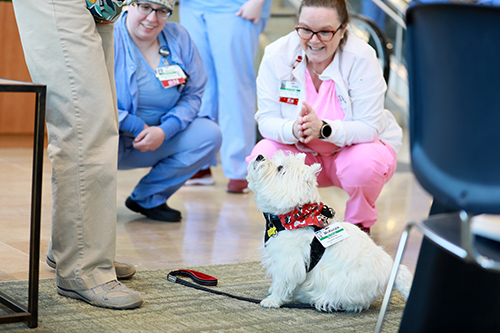
“We went up, and I’m so glad we did,” Sharyl says of yet another meeting that was just meant to be. They thoroughly enjoyed their visit with the lovely couple, marveling at the fact that they would have missed each other had the request come in just five minutes later.
“It’s the best job in the world,” she says. “And it gives me so much hope and happiness when I see what McKenzie can do.”
Article reposted with permission from Lexington Life magazine.

